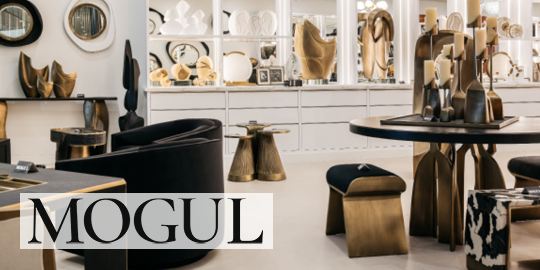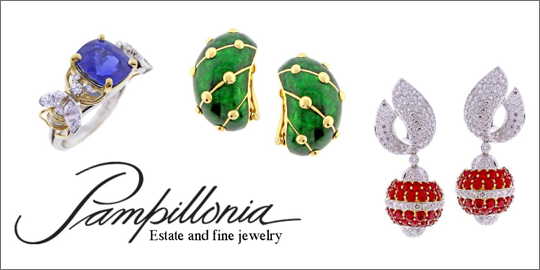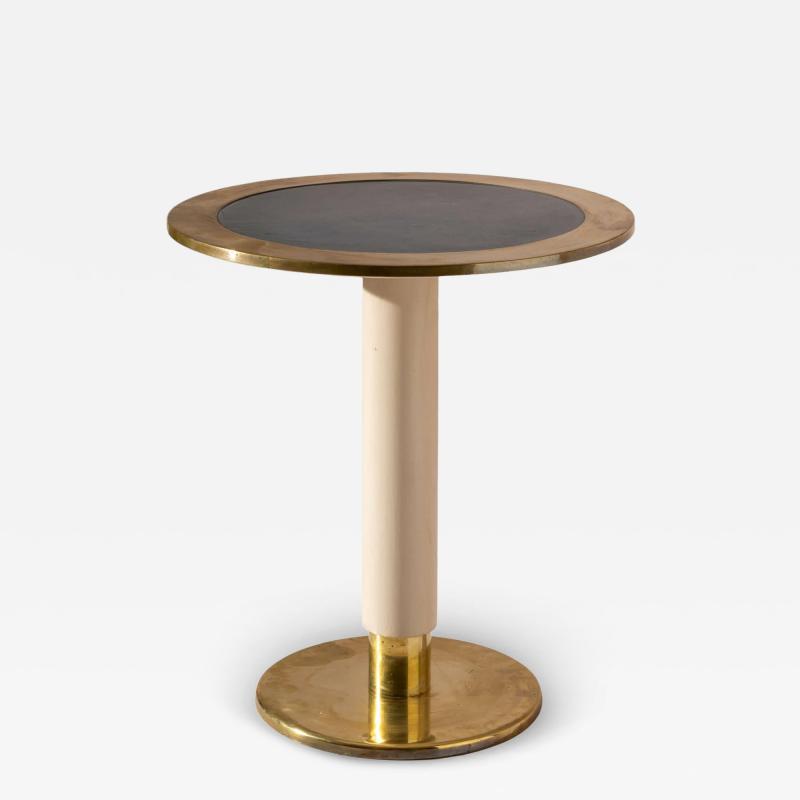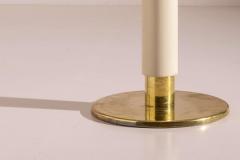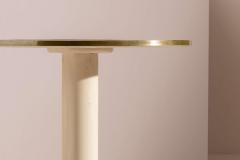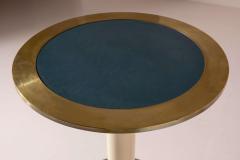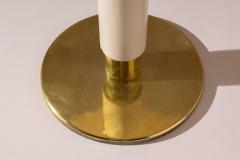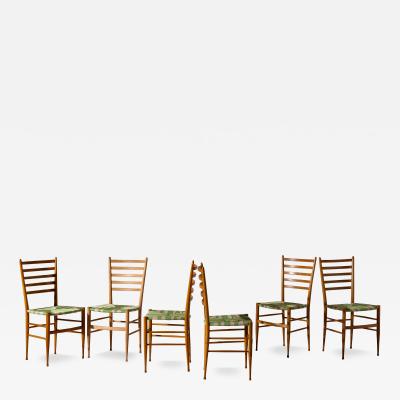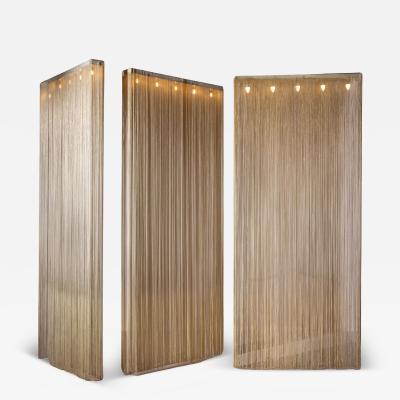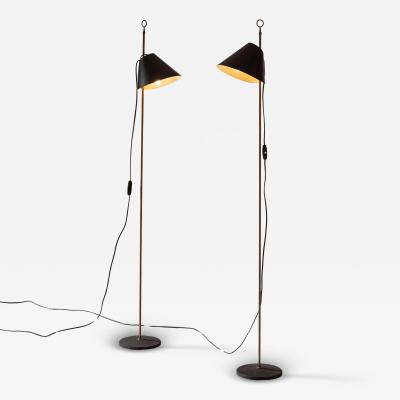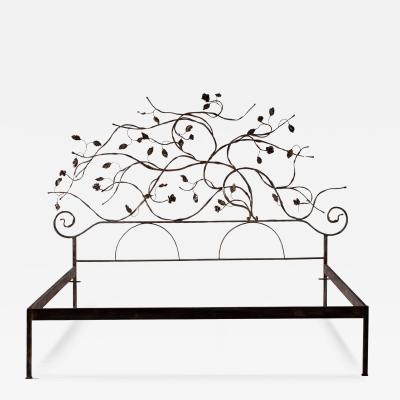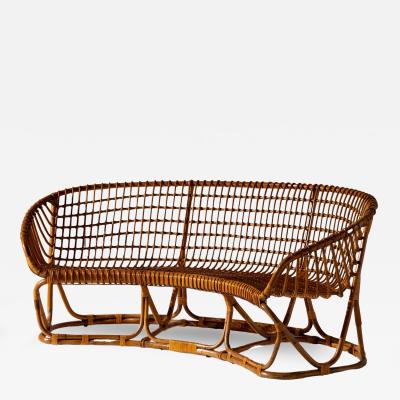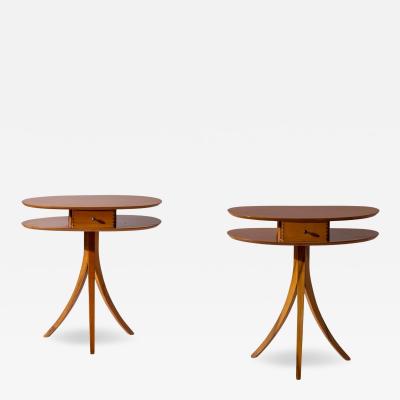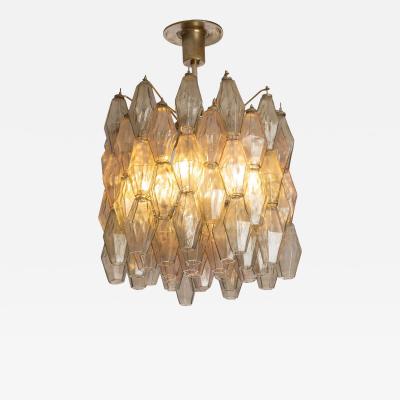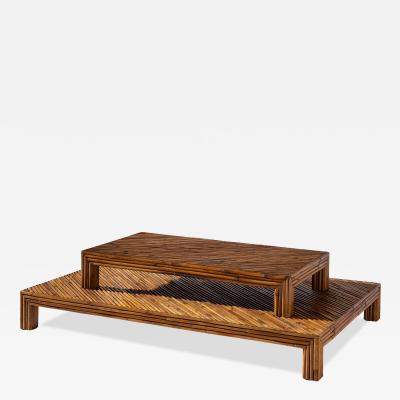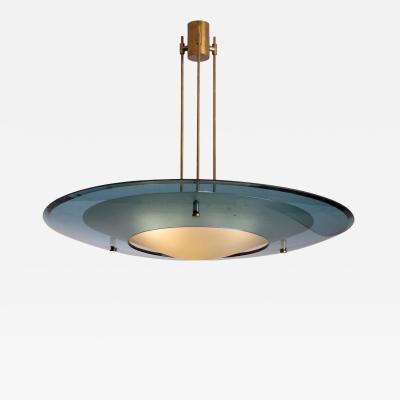A rare and highly collectible occasional table in brass, wood, and linoleum from the furnishings of the motor ship Oceania – design by Gio Ponti, Italy, 1952
Evocative images remain of the great ocean liners that once connected Europe to the Americas by sea. Until the mid-20th century, such voyages were synonymous with luxury—a way of traveling, and of living, that valued slowness and the ability to savor small gestures and refined elegance, lost in the speed of air travel.
This round occasional table—round like a porthole or nautical hatch—was part of the interiors of the Oceania, a motor ship commissioned by Lloyd Triestino in 1952. A promotional postcard shows her docked at the port of Genoa, the black-and-white print enhancing the contrast between the monumental whiteness of the 14,000-ton steel hull and the darker, medieval character of the buildings in the background—perhaps even intentionally underexposed in the photograph. Ancient and modern, captured in a single image.
We can imagine what Gio Ponti believed the first-class passengers should experience on board through his own words, written in Domus:
A vivid testimony to the standard of living of the nation offering hospitality on board.
And what better testimony than pairing technological excellence with fine art, ceramics, majolica, and a consistent, elegant design approach that extended from tableware to the smallest furnishings?
This brass occasional table is a surviving fragment of that grand utopian vision. The base is made of lacquered wood and the top is linoleum—a practical choice to ensure the stability of objects placed on it. One can picture a liveried steward serving fine aged cognac in a cut crystal glass, graceful and unaffected by the gentle roll of the ship.
Another quote from Ponti reveals the deeper philosophy behind his nautical designs:
The art of seducing one into travel has reached the point where it is not the allure of the destination ahead, but the enchantment of the journey itself—travel for the sake of travel, in fact, travel for the sake of traveling well.
The Oceania certainly traveled well, sailing between South America, Africa, and the East. And if the destination was not what mattered—as Ponti subtly suggests—then how do we qualify the experience of watching the coast disappear from the ship’s stern? Once again, it’s Ponti himself who explains it, using the words seduction and enchantment to describe his designs for the sea.
We cannot know if the great architect was aware of the inherent transience of such experiences. But what is certain is that the era of the great liners was brief. The Oceania hosted her 150 first-class passengers for less than thirty years before being decommissioned in 1977, dismantled, and her furnishings dispersed.
To rediscover one of these pieces today is not an act of nostalgia, but the sharing of a still-possible utopia—one born of vision, elegance, and the belief that design can shape not only objects but entire experiences.
Fully restored and in excellent condition, the table comes with a certificate of authenticity from the Gio Ponti Archives.
Dimensions: 80 × 45 × 45 cm
(31.5 × 17.7 × 17.7 inches)








